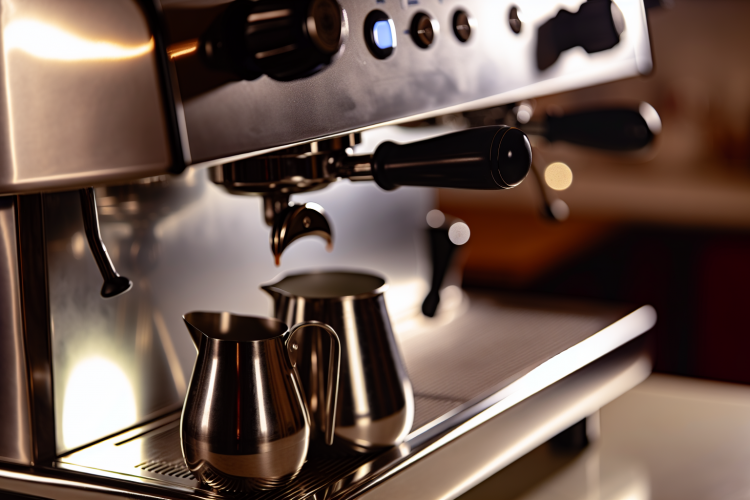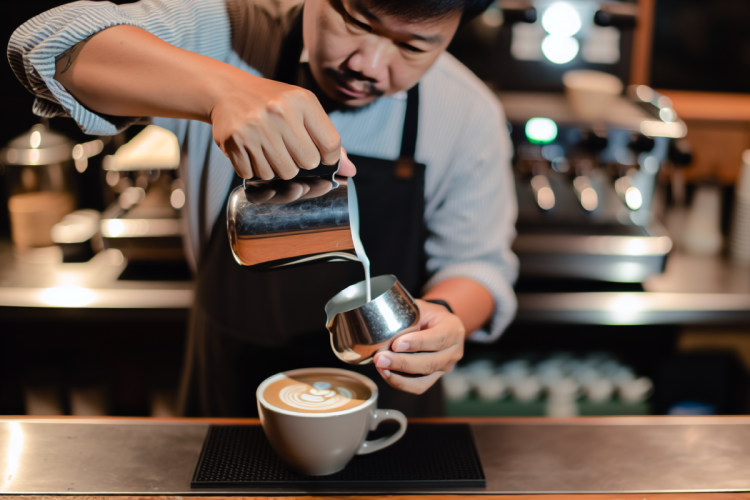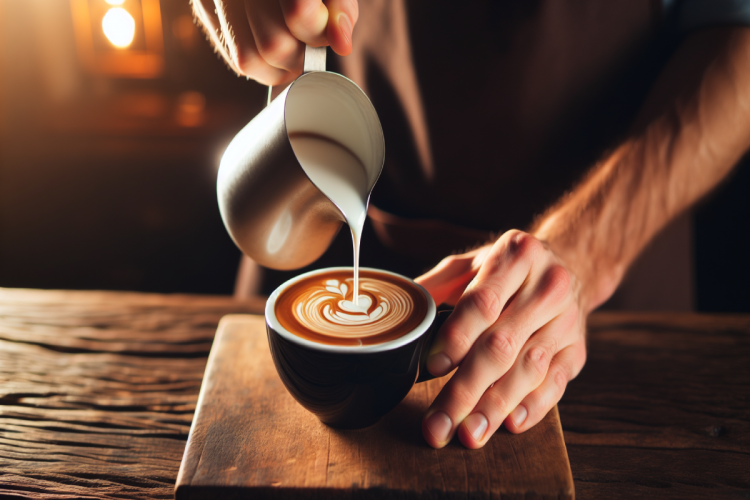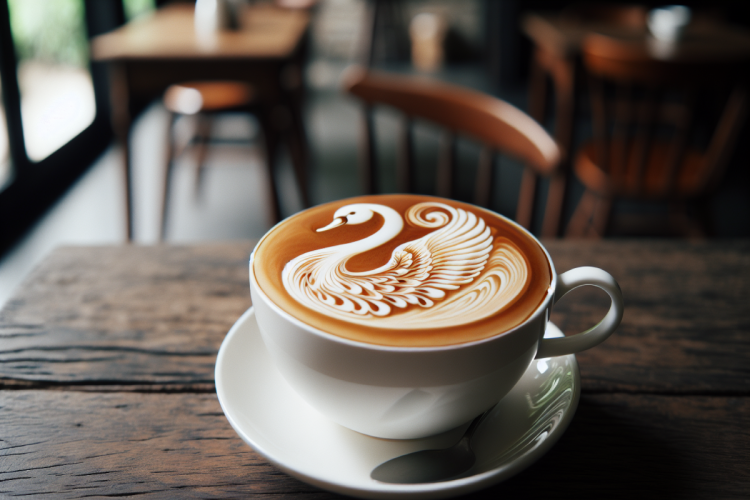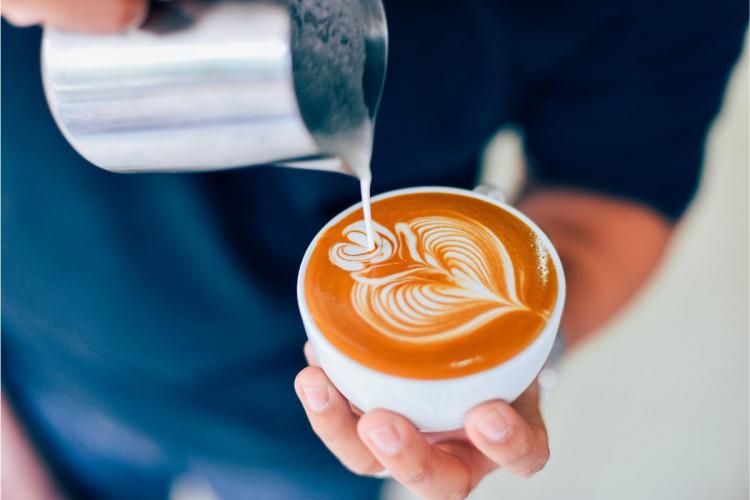Mastering latte art
A step-by-step guide for home baristas.
Want to elevate your home coffee experience with latte art? This guide distills the essentials of perfecting latte art, from the first pour of crema-laden espresso to the final stroke of your steamed milk masterpiece. By demystifying the techniques and tools, you’ll be ready to craft the hearts, rosettas, and tulips that make every cup more than just a beverage.
To make latte art
- Successful latte art depends on mastering the basics of espresso and steamed milk, using the right tools, pouring technique, and having patience and consistency in practice.
- There are various pouring techniques critical for latte art such as the dot, wiggle, and cut, with each having specific methods to achieve foundational shapes like hearts, rosettas, and tulips.
- Advanced latte art designs like the Swan and Framed Rosetta require precision in milk flow and cup manipulation, while troubleshooting skills are essential for dealing with common problems like milk consistency and pouring challenges.
The essentials of latte art
In the realm of latte art, three elements stand as the pillars of a good design:
- Espresso: A fresh shot of espresso with adequate crema not only provides a strong flavor foundation but is also crucial for creating visually appealing latte art.
- Steamed milk: The texture of steamed milk is equally important, as it allows for the creation of precise and detailed designs.
- The right tools: Having the right tools, such as a milk frother and a latte art pen, can make the process of creating latte art much easier and more enjoyable.
Let’s examine these elements more closely.
Espresso basics
The journey to a perfect espresso begins with the right espresso machine. An espresso maker is vital in making latte art, as it provides the essential espresso base. A high-quality coffee grinder is another key tool. The right granularity of espresso grounds, fine enough to slow the water and extract the espresso properly, can be achieved with a good grinder.
Coffee beans selection matters too. Use beans with a balanced taste and clear body, often achieved by blending beans from various origins, for a high-quality espresso drink.
Finally, when pulling the perfect espresso shots, tamp with 30-40 lbs of pressure on the portafilter, use 7-8 grams of ground espresso, and aim for a brewing time between 21-24 seconds.
Steaming milk for latte art
Much like the importance of a good espresso base, acquiring the correct milk texture is vital for latte art. You should steam cold milk, preferably whole milk, until it achieves the consistency of wet paint, which promotes the right balance of texture and fluidity necessary for intricate designs. The temperature of the milk is essential too. Aim for a final temperature between 60 and 70°C (140 and 160°F), stopping frothing at approximately 25°C (77°F).
To create the perfect microfoam for your coffee, follow these steps:
- Fill the steaming pitcher to about a finger’s width below the spout to accommodate the correct amount of foamed milk for the intended cup size.
- Maintain the correct jug position throughout to ensure consistent milk flow.
- Practice creating microfoam with the correct texture.
- Use a thermometer to assist beginner baristas in becoming familiar with the ideal temperatures for milk texturing.
Tools and equipment
With the espresso and milk aspects covered, let’s discuss the necessary tools. A rounded or bowl-shaped cup is recommended for easier pouring of latte art, as it facilitates better milk flow and design formation. Also, latte art cups should be easy to grip, with a wide surface and preferably a white, ceramic base to clearly distinguish the coffee and the art.
A steam pitcher with a good pouring spout is crucial for controlling the flow of microfoamed milk to create precise latte art designs. Other tools that can enhance the espresso preparation process for latte art include:
- A knockbox
- A tamper
- A tamp mat
- A scale
The art of pouring
Once you’ve got a grip on the basics, the pouring phase begins. Consistency in milk texture is critical to effective latte art, similarly to wet paint, with 20-35% expansion after steaming, accompanied by mastering primary pouring skills such as speed, proximity, and spout placement. Starting the pour from a height of about 7-8 cm allows the milk to sink beneath the espresso’s crema, and tilting the cup at a 30-45° angle is recommended to achieve a solid base for the design.
In order to evolve the design, the barista needs to bring the pitcher closer to the coffee’s surface while meticulously adjusting the pour rate and managing the movements for a seamless design process. Finishing the latte art design involves planning the desired outcome, using intentional movements, and lifting the pitcher higher at the end to avoid trailing through the pattern. Let’s break down these techniques further.
Pouring Posture and Control
Identifying a relaxed body posture is necessary before commencing the pour. This helps ensure symmetrical designs that are well-oriented in the cup. For a natural and comfortable pouring position, keep your arms at your sides with your elbows down, and pour directly in front of you. This will help you pour more easily and comfortably..
Controlling the pour speed is also crucial. Here are some tips to keep in mind:
- A slow pour may lead to an under-aerated beverage and difficulty in latte art creation.
- Pouring too fast can break the crema apart.
- Be mindful of the distance between the pitcher and the surface of the beverage, as this can affect how the milk interacts with the crema.
Basic pouring techniques
There are basic pouring techniques to learn when creating latte art: the Dot, Wiggle, and Cut. In latte art, two pouring heights are crucial: 5 cm to establish the base of the design and 0.5 cm to initiate the actual art close to the drink’s surface. The ideal timing to start constructing the base for the design is when the cup is 40-70% full, facilitating larger patterns to spread without being hindered by the surface tension of the beverage.
To create the foundational Dot, begin pouring the milk steadily from a cold pitcher while anchoring the pitcher in one spot and then gently increase the flow to bloom the dot in the beverage.
For the Wiggle, which creates flowing waves or ripples in latte art designs, use delicate finger movements rather than larger wrist or arm gestures. Before starting, ensure the surface is clean by wiping it with a wet cloth.
The Cut technique, on the other hand, finalizes and defines the shapes, using a dragging motion which can create or refine patterns such as hearts or rosettas.
Simple latte art designs
Having mastered the basics, we can now proceed to create simple latte art designs. Shapes like a monks head or solid heart are beginner-friendly designs that serve as great starting points for novices. By wiggling the pitcher while pouring latte art with steamed milk, you can create a rosetta, a classic latte art pattern resembling a fern.
Another beginner-friendly design is the tulip. This is created by stacking hearts, one on top of the other, which allows beginners to shape a visually appealing and more complex structure in latte art. Let’s go through each of these designs in detail.
The heart
The heart design is a good starting point for latte art beginners. First, start by pouring milk into the center of the cup from some height when the cup is half full. This forms a white circle that serves as the base. Once a white circle forms, gently shake the pitcher from side to side while slowly moving backward, creating the round bottom part of the heart.
To finish the heart design, lift the pitcher and pour a thin stream of milk through the center of the white circle to create the tip of the heart. Ensure a steady hand for a clean shape.
The rosetta
The rosetta pattern is another beautiful design you can try. Here’s how to do it:
- Begin by pouring milk into the center of the cup until the espresso’s crema starts to break, with the pitcher close to the cup’s surface.
- Then, proceed with the milk pour, wiggling the pitcher side to side and moving back slowly to form the leaves.
- Adjust the wiggle speed for the desired thickness and number of leaves.
Complete the rosetta design by drawing the pitcher swiftly through the pattern to create the stem and a small heart at the end, using the ‘Cut’ skill for precision.
The tulip
For a more complex structure, try the tulip design. Start by pouring the first white circle to form the large base of the tulip. Then, create multiple symmetrical layers on top of the large base by stacking progressively smaller ‘bulbs’ of milk foam, ensuring each subsequent layer sits within the one below it.
Finish the tulip by lifting the pitcher and pouring a thin stream of milk directly through the center to create a stem and give the tulip its final shape.
Advanced latte art creations
Feeling confident? Let’s delve into advanced creations such as the Swan, Framed Rosetta, and Hanging Heart. These complex designs require a higher level of precision in controlling milk flow, manipulating the cup, and skilfully layering milk and foam.
Embellishments can also be added to these advanced designs using tools like:
- powder
- stencils
- precise pours of milk foam
- chocolate
These tools can enhance visual appeal and complexity. Let’s dive deeper into each of these advanced designs.
The swan
The swan design is an elegant piece that requires precision and control. To start, pour a base in the cup that is similar to that of a Rosetta or a winged design. Then, pour a thick stream of milk into the cup to create the body of the swan, situating it towards one side.
As you finish the pour, slow down and flick the pitcher back to create a smooth and continuous neck and head for the swan design. Add the finishing touches to the swan, such as the beak and eye, using precise dotting with either a thin stream of milk or a barista tool for detailed work.
The framed rosetta
The framed rosetta is a beautiful design characterized by a rosetta pattern encased within a distinct, bold outline, often resembling a picture frame. Begin by moving the pitcher close to the drink’s surface and pouring ‘fast’ to the middle to spread the pattern; once milk accumulates on the surface, start the wiggle to create the waves for the Rosetta.
As the base of the Rosetta forms, back up with the pitcher while continuing the wiggle until nearly reaching the edge of the cup. Pour milk gently back and forth while slowly moving backward after the cup is halfway filled to create the petals of the Rosetta.
The frame is created by pouring a thicker line of milk around the edges of the Rosetta for contrast, and completing the design with a heart at the top by stopping the wiggle and pouring in one spot, then finishing with a lift and draw through the pattern to cleanly divide it.
The hanging heart
The hanging heart is a unique design that dangles symmetrically from the rim of the cup. To start, rest the spout of the pitcher against the cup and rock the pitcher side to side to create a base circle or apple shape. Then, tilt the cup slightly while pouring the milk into the center, aiding the milk in pushing outward to create the circular shape foundational to the Hanging Heart.
To finish the Hanging Heart, follow these steps:
- Lift the pitcher for a thin, steady stream of milk to create suction, which arches the top of the circle, forming the curves of the heart.
- Draw the point of the heart by carrying the flow through from one side to the other.
- Maintain an even milk flow and precise cup movement to ensure the heart dangles symmetrically from the center of the cup’s rim.
Troubleshooting and tips
As you progress on your path to latte art mastery, you may face some obstacles. Not to worry, we’ve got you covered. Pour into the center of the espresso to ensure the design is centered; this is crucial for creating symmetrical and aesthetically pleasing latte art. By carefully pouring into the center and avoiding the edges, you prevent the milk from shooting around, which helps maintain the integrity of the crema and the overall latte art design.
Keep in mind that achieving proficiency in latte art demands commitment to practice, repetition, and patience. To practice milk steaming without waste, water with a drop of dish soap can be used instead of milk.
Milk consistency issues
The consistency of the milk is a fundamental factor in latte art. Balancing the variables while steaming milk is crucial for achieving the right texture necessary for pouring good latte art. If your milk is too thick, ensure proper aeration at the beginning of the steaming process. On the other hand, if your milk is too thin, introduce more air but avoid overstretching.
After steaming with a steam wand, follow these steps to achieve a smooth texture with a sheen:
- Tap and swirl the milk to eliminate large air bubbles.
- Stir the milk to incorporate any existing foam.
- Adjust the air introduction during steaming if you’re experiencing ‘wispy’ designs due to too little air or ‘blobby’ designs due to too much air.
- Ensure a consistent swirling motion to achieve the desired texture.
Pouring challenges
You might also face obstacles during the pouring phase. To address surface design challenges, it’s crucial to:
- Pay attention to the milk’s temperature and consistency
- Adjust the height and angle of the pour
- Maintain the correct flow rate
- Pour at an optimum distance from the surface
Achieving desired pour latte art patterns depends on these key factors.
Utilizing visual recordings can provide baristas with valuable feedback to refine their pouring techniques, helping them to determine if they are pouring at an appropriate proximity and pace.
Practice and patience
Persistence and regular practice are the cornerstones of mastering latte art. Remember, it’s not about getting it perfect the first time, but about the learning process and the joy of seeing your progress over time.
To practice milk steaming without waste, water with a drop of dish soap can be used instead of milk. It’s all about getting the feel of it and building your muscle memory. So, keep practicing!
Perfect foam
In conclusion, mastering latte art is a journey of discovery and creativity. We’ve walked you through the steps, from understanding the essentials of espresso and milk texturing, to learning pouring techniques, creating simple and advanced designs, and troubleshooting common challenges.
Latte art is an art form that combines precision, creativity, and a lot of practice. So, grab your espresso machine, a jug of milk, and let your creativity flow. Remember, the journey is as important as the destination. Happy pouring!
What are the 3 different styles of latte art called?
The 3 different styles of latte art are heart, tulip, and rosetta. Skilled baristas can also create personalized designs, such as animals, landscapes, and portraits. Enjoy experimenting with latte art!
What makes latte art?
To create beautiful latte art, you need to achieve the perfect microfoam, which has a shiny, uniform texture and a sweet, nutty flavor. It's a challenging skill to master. May 11, 2021.
Is latte art easy to learn?
Latte art can be challenging to learn, requiring time, practice, and patience, but it's definitely worth the effort. Check out one of the "Practicing Latte Art" videos for a solid baseline to brush up on latte art basics.
Why is the quality of espresso important in latte art?
The quality of espresso is important in latte art because it forms the canvas for your designs and contributes to the flavor of the drink.

